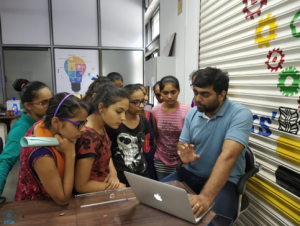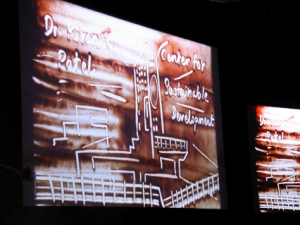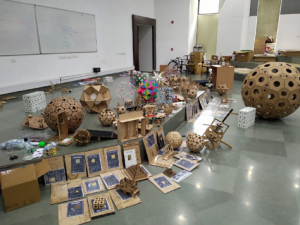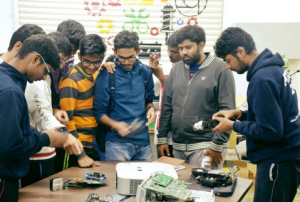
“Interdisciplinarity is crucial for the development of excellence.” – Rane Willerslev, renowned Danish anthropologist
Interdisciplinarity is the buzzword of the present times. There has been a prominent shift of interest towards exploring the burning problems of today and providing practical solutions by means of cross border engagement among multiple branches of study and research. Numerous educational institutes, research bodies and industries across the globe are focusing on the development of liberal programmes which promote a broader understanding of different subjects and fields with a more holistic thinking. The sole purpose is their efficient implementation for the progress of society.
An interdisciplinary approach leads to crucial dialogues and discussions across heterogeneous disciplines and is both an article of faith and an intellectual imperative. It expands the boundaries of creation like none other and forms the bedrock of unmatched innovations. This is the reason why maximum interdisciplinary interaction serves as the backbone of all the aspects of academic culture at IIT Gandhinagar. It is clearly seen in the form of a zealous faculty (majority which is part of multiple disciplines), dedicated students (more than 20% have their principal investigators/ Co-PI/ PhD advisers from an outside discipline) and the latest open-collaborative-lab system that actively prevails throughout the campus. The Institute has established seven interdisciplinary research centres with the aim to integrate information, concepts, perspectives and techniques from multiple disciplines so as to inculcate and enhance a fundamental comprehension and acquire a multifaceted approach for addressing several problems of national and international importance whose solutions are beyond the scope of a single field of research practice.

A strong promoter of utilizing engineering for the betterment of people in every way possible, IITGN initiated the Centre for Biomedical Engineering (CBE) after signing the Memorandum of Understanding with the Government of Gujarat during the Vibrant Gujarat Summit in 2011. The main objective of CBE includes undertaking cutting-edge research in various areas to develop products and services that are of social relevance to India and the world. One of the first centres to be set up at the Institute, it focuses on ideating and producing low-cost technologies related to medicine and healthcare. Diagnostic and therapeutic tools and techniques which involve developing novel methods to detect and treat diseases, automated rehabilitation and prosthetic techniques which encompass use of robotics and virtual environments for developing more efficient technologies to be utilized by physiotherapists, neurologists and surgeons & public health techniques which cover production of tools to prevent diseases and promote health in the society, form the three major research areas of CBE.
The Center for Creative Learning (CCL) at IITGN is focused on providing hands-on creative pedagogy with the goal of bringing back that gleam in the eyes of thousands of people which usually gets lost because of the theory and ratta-fication oriented education system! CCL encourages students to tinker and play around rather than memorizing the facts and figures mindlessly. It designs, develops and documents activities, toys, models, exhibits, projects and short courses that are exciting, promote critical thinking, logical reasoning, problem solving, in-depth exploration of concepts and effectively explaining the math and science behind them. It also documents these initiatives as short films, creates illustrated books with explanations for students, teacher’s guides and activity booklets so that every child can have access to interesting education throughout the country.


Working along the lines, ‘any development that is not sustainable is no development at all’, the Institute established Dr Kiran C Patel Centre for Sustainable Development (CSD) with a generous endowment from Indian overseas philanthropist Dr Kiran C Patel who is a distinguished cardiologist based in Tampa (Florida), USA. The pivots of this Centre include identification and conduction of breakthrough research on various sustainability-related problems of the society, development of cost-effective practical solutions in the form of prototypes, patents, and publications for sustainability-challenges by integrating research, traditional knowledge and field understanding, establishment of effective technology-transfer and outreach initiatives for implementing sustainability-solutions within and around the campus, conduction of workshops and conferences imparting education, spreading awareness and community engagement on sustainable livelihood, promoting national and international networking among academia, industry, policy makers, non-profit organizations and other stakeholders and encouraging numerous visiting faculty and student research/ educational degree programmes on sustainability at IIT Gandhinagar.
The Centre for Safety Engineering (CSE) at the Institute is a predominant venue for the stakeholders of the society working towards safer urbanized development. The objective of this Centre is to promote a safe-built environment in both public and private spheres. For the rapidly growing global economies such as India, infrastructure safety has become a matter of prime importance. New building technologies and struggling public safety present new challenges and CSE is eager to work together for the development of a safer tomorrow with all, for all.
Realizing the potential of modern scientific aids in the field of archaeology, IITGN set up the Archaeological Sciences Centre (ASC) with the purpose to pursue archaeology in multidisciplinary and interdisciplinary perspectives. ASC follows a research-oriented approach to bridge the gap between archaeologists and the scientific community in the present times, so as to understand the past of humankind and serve our future in an efficient manner.

![]()

The Campus on the Sabarmati understands that the design element is crucial for any type of innovation in the 21st century and wants to promote the same in its students. As an effort in this direction, the Design and Innovation Centre (DIC) was founded. Multifaceted approaches of different disciplines leading to collaborative research and education in design and innovation form the backbone of this Centre. The focus areas of the DIC include conceiving and developing innovations that aid in the advancement of the society and it follows a human-centric design philosophy by means of its numerous curricular and extracurricular activities. The Centre offers semester long courses and internships to inculcate an understanding of how design positively and significantly affects technology in students.
Working towards establishing itself as a centre of excellence in cognitive science which is accepted as one of the four pillars of knowledge of 21st century along with nanotechnology, biotechnology and information technology, IITGN started the Centre for Cognitive and Brain Sciences (CCBS). This Centre aims to work closely with other disciplines and develop ingenious solutions for education, health care, social behavior and technological development while leveraging inputs from cutting-edge developments in brain science. The center has already evolved into a vibrant hub for an exchange of ideas where everyone can learn, innovate, explore and contribute their fair share towards unraveling the mysteries of the mind.
“Interdisciplinarity leads to problem solving capabilities that can contribute significantly to every field of professional practice and get actively involved in finding the most feasible solutions. This is exactly what we want our students to grasp and perceive,” said Manasi Kanetkar, Assistant Teaching Professor in Design.
The best interdisciplinary interactions arise from the realization that a vast majority of the pressing issues now-a-days cannot be efficaciously addressed by just one discipline. An interdisciplinary approach becomes extremely crucial to solve the grand challenges faced by our society today – energy, water, energy, food, climate and health – if we want to achieve the best results, we must work together. Maximum interdisciplinary interactions at and by IIT Gandhinagar through its numerous initiatives are an effort in this direction and generous funding by people and national and international bodies have provided a boost to it. Over the past five years, such collaborations have increasingly made a remarkable difference clearly visible as numerous patents, publications in reputed journals, projects, semester courses, national and global workshops, conferences, events, and many more.
“In the longer run and for wide-reaching issues, more creative solutions tend to come from interdisciplinary collaboration.”- Robert James Shiller, American economist, academic and best-selling author
